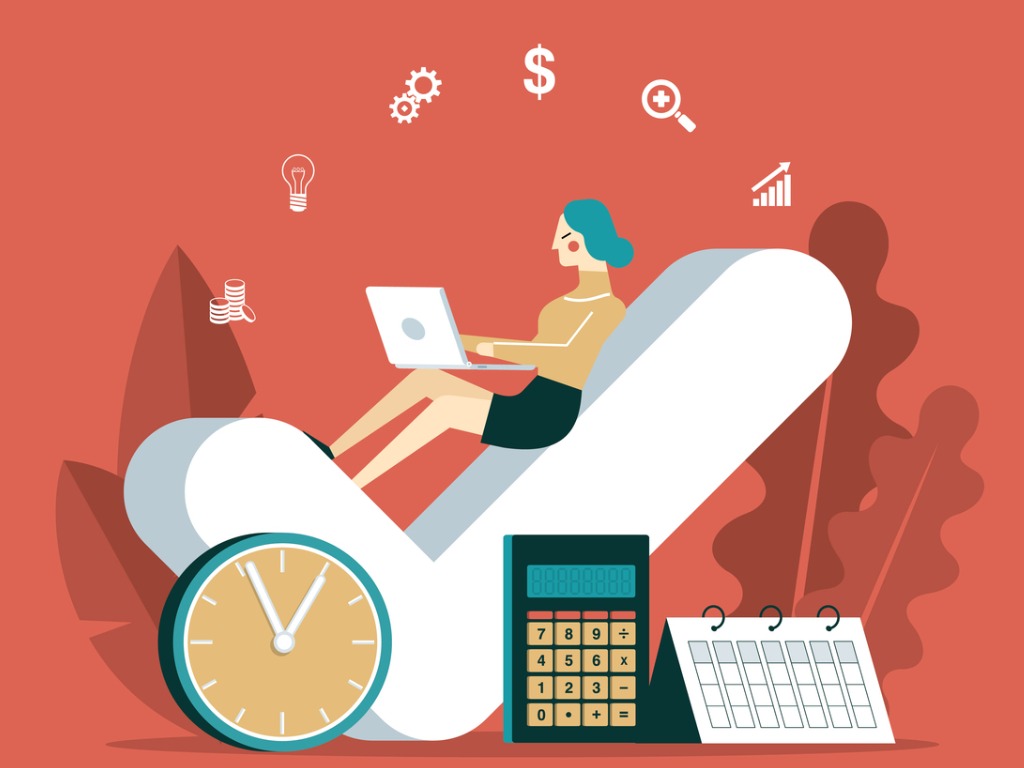
We need to redefine our relationship with time, suggests Chris Menzel
What is time? Is it linear or circular? Is the future behind or in front of us? We talk about time all the time, and never seem to have enough. How often do you look at your watch or smartphone on a typical day? Do you have phone-free time during your week?
One of the great misconceptions of time is the idea that the more we squeeze into life, the more we get out of it. The opposite is true: the more we focus on acceleration and time compression, the more we miss.
“Life holds one great but quite commonplace mystery. Though shared by each of us and known to all, seldom rates a second thought. That mystery, which most of us take for granted and never think twice about, is time.”
Michael Ende (Momo)
Measuring Time
We have been measuring time since the first mechanical clock was invented. The quantification, measurement, and counting of both time and money created a close relationship between the two. The industrial revolution and creation of the first large factories increased the necessity of time measurement to ensure productivity and to remain competitive. Modern bureaucracy would also be unthinkable without the clock because we use it to agree on binding working hours.
Even though the measurement of time is precise according to the clock, we experience time differently. Hours and minutes can stretch and then shrink depending on what we do and our mood. Age also plays a part: when we are young, time seems to pass slowly, and when we are older time flies.
We try to manage our time – to increase effectiveness, efficiency, and productivity (like a machine). We even try to optimise our leisure time and subject ourselves to the dictatorship of mechanical time. Our modern smartphones and smartwatches not only tell us when to go where and what to do, but they even measure our steps, heart rate, and sleep.
Time and Culture
When we speak of time, we only mean our idea of time. Our perception of time is subjective. People from different cultures have different perceptions of time, which can cause conflicts. Some societies orient themselves more according to mechanical time, others more according to signs from nature.
One example of cultural concept of time is German punctuality. Depending on whether we consider such a concept of time desirable or not, this concept has positive or negative connotations. Many people are worried about being regarded as unpunctual. If you show up late for a business appointment, you will be perceived as unreliable in other areas of life as well, and so the clock has become a moral authority in our society. However, due to increasing networking on the internet, we are becoming a species of simultaneous people and no longer do one thing at a time but multitask. So, punctuality in everyday life is becoming less important.
How important a culture perceives time to be depends on the importance the culture places on money. People who value money want to spend their time earning and increasing it. Whether “time is money” depends mostly on the culture we live in.
Time and Nature
“Nature time” is the time required by nature for processes such as the tides or the change of day and night. The human body is also subject to individual, natural cycles, as in menstruation or ageing. Nature time is variable and imprecise; it is rhythmic with repeating phases. It observes the environment and the individual constitution. Nature time is a qualitative time, which is why it also makes people (time) satisfied. When we stick to a natural rhythm, we listen to our body and stay healthy.
Many bodily functions (e.g., blood pressure, heart rate, body temperature, hormones) are influenced by circadian rhythms. The sleep rhythm adapts to physical and mental exhaustion, which can be seen in the inclination of an individual to sleep at a particular time during a 24-hour period.
The extremes are “eveningness” (most active and alert in the evening – delayed sleep period) and “morningness” (most active and alert in the morning – advanced sleep period). Most people have flexibility in the timing of their sleep period. The normal variation is two to three hours later for evening types than for morning types. For the majority, it is best to go to sleep between 11 p.m. and 1 a.m. and wake up between 7 a.m. and 9 a.m. This means that often people cannot sleep according to their chronotype because of their given working hours.
To find out what chronotype you are, evaluate your sleep during holidays. Go to sleep when you are tired, without setting an alarm clock, and avoiding unnatural light when it is dark outside. After a few days, your normal sleep rhythm should tell you which type you are. Or use this quiz to find out: https://chronotype-self-test.info/
Listen to your body’s time needs and create rituals that structure your day. Each body has its own power curve. If possible, you should adapt your tasks and activities to it, which will help reduce your stress level.
Time and the Workplace
“Work hard and get paid for your mind, not your time.”
Vala Afshar
Today in our work life we are less restricted by standardised time structures. People are allowed to be flexible. This seems positive, but it also means that our fixed free time is disappearing as a result. Digital natives must decide for themselves which time patterns they follow.
Consider the following questions:
- How is time measured in your workplace?
- What are the time expectations?
- How important are flexibility and punctuality in your team?
- Do you provide a structure to those who need it and more freedom and responsibility for others?
- Do you have planned focus time?
- Are different time concepts and cultures considered and included?
- Can employees work according to their chronotypes (working when they are the most productive)? (This would raise motivation and reduce workloads.)
- Are meetings organised with different chronotypes in mind?
- How much of your work time do you experience as being good, bad, satisfying, dissatisfying?
Motivation at work, productivity and engagement are dependent on the quality of our experience. The best time for intellectual performance is morning and late afternoon hours. The likelihood of error for mental work is high at lunchtime and at night. For physical performance, the late afternoon hours are the most suitable.
Taking a Break
Nowadays, we rarely leave our desks. When we entered the workforce, we forgot how to take breaks, as we believed that people might think we were lazy. However, people who do not take breaks lose motivation, creativity, and productivity. That is why employers must encourage their employees to take regular breaks from work, and must pay for them.
Breaks and repetition are also part of time diversity and enrich our sense of time. Taking a break of any kind is important (e.g., tea break, pause for reflection, time-out). Breaks create distance. Without taking any breaks, burnout is likely. Plan and protect your breaks and create rituals (e.g., 11 a.m. tea break, 10-minute nap during lunch break followed by 20-minute walk outside). Try to keep these regular and organise everything else around them. Breaks need to be a fixed, regular part of a working day and part of the company culture.
Studies show that we should take a break for about five minutes at least every 60 minutes. Even if we are highly motivated, exhaustion sets in after 70–90 minutes. If you continue to work longer, you become unfocused and make more mistakes. The longer you postpone a break, the less relaxing it is. Work-related breaks (e.g., waiting for a call back) do not have the same recovery value as voluntary breaks: move around, open the window, and get some fresh air or talk to colleagues.
Take at least one longer break – ideally at midday when your body is already in a performance slump. A power nap of up to 20 minutes is helpful. Does your company provide appropriate rooms for this?
Good rules for breaks
- Do the opposite of the previous activity.
- The best breaks are the ones you take before you need them.
- Hands off your mobile phone: they are break killers.
Quiet Time
Integrate as many quiet minutes as you can in your week. When you are between activities (a new meeting, on the train, etc.), take a minute to stop and do nothing. Close your eyes and count to twenty.
In our working world, slowness and waiting are not perceived as positive by most. But to ponder, reflect, observe, and take out time is useful and can release creativity, beauty, and precision. If you regularly give your brain a little idle time, you can absorb new things better, create connections, and develop ideas more easily, and your employer benefits from this.
Use waiting time as an opportunity to breathe and see it as time won, rather than time lost. Mindfulness exercises or meditation can help you to become more aware of the present moment.
Repetition is a necessity for neural learning. Not a conveyor-belt-like repetition, but quality time when you can discover something new and at the same time do not have to make new decisions. Boredom, strolling, and dawdling are also important. Without them, we are distracted by silence and stillness.
Sustainable Time Culture
Through reframing, we can learn to re-evaluate the time culture we have been taught. Question your view of time: What kind of image do you have of time? Do you see it as something you can save, manage, and control? Or do you see it as a companion through life?
A first step can be to put more emphasis on the wealth of time gains instead of the wealth of money. Avoid time thieves and favour “work thieves.” Let your work life suffer instead of sacrificing time when you are well and feel good. Think about all the things you do not have to do that day.
Then, create quality downtime. Do not be afraid to do nothing; say things to your friends like: “I was really lazy today!” Among the top five regrets of dying people are working too much and not having enough time for loved ones. So how and with whom do you want to spend your time? What is causing you stress and how important is it to you?
Analyse your everyday life. Divide it into task time, organisational time, personal time, social time, and nature time. Create an individual and interwoven time network. Find a balance between time demands and time margins.
Instead of reaching for faster and higher things, focus on what is enough. A “let it be” list can help you with feeling JOMO – the joy of missing out – instead of FOMO – the fear of missing out. Instead of fearing you will miss something, take joy in the fact you are missing it.
Summary
Don’t plan every minute of the day; leave room for surprises. Unfortunately, the priority for speeding everything up continues. Initiatives such as family-friendly working time, trust-based working time, a reduction in weekly working time, job sharing, and the right to work from home are all good, but for a sustainable time culture, we need not only new working time models, but a fundamentally new time culture in which time diversity is in action.
Our calendars are too full, and time feels like a prison. We must learn to manage our time properly again, to listen to our body’s needs and leave time for spontaneity. We must make time for time.
Sources
This article was inspired by the books Time Is Honey by Karlheinz A. Geissler and Jonas Geissler and Alles eine Frage der Zeit by Harald Lesch, Karlheinz A. Geissler and Jonas Geissler.
What is Time? A Simple Explanation by Anne Marie Helmenstine, Ph.D.
Time by John Jamieson Carswell Smart
Arrows of Time, a project by Quanta magazine














Love this article. I agree we need to shift our time mindset.